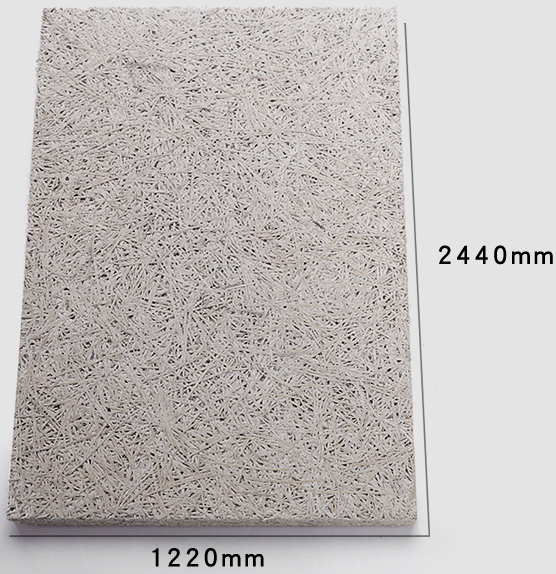wood wool panels
กก
Application of wood wool boards at
a glance
What are wood wool boards and what different variants are there? What
are the properties of wood wool boards? For which insulation projects
are they suitable,
which ones are not?
Wood wool boards for insulation are also commercially available under
the name "wood wool lightweight building board" which was common until
the introduction
of the EU insulation standard at the beginning of June
2013 and the corresponding abbreviation "HWL". The old name did not
characterize the insulation panel
itself, because it is by no means as
easy as its name suggests. On the contrary: Such wood wool boards, as
they are now correctly called, are among the
heavyweights of their kind.
Because they contain as a binder not synthetic resin such as chipboard,
which makes them quite lightweight, but heavy cement,
magnesite or
gypsum.

How to make wood wool boards from wood
Wood wool boards are suitable for indoor applications, underground
garages and cellar ceilings. Knauf Insulation wood wool panels bear the
Blue Angel
because they are particularly low in emissions.
Wood wool boards are suitable for indoor applications, underground
garages and cellar ceilings. Knauf Insulation wood wool panels bear the
Blue Angel
because they are particularly low in emissions.
Incidentally, this type of bonding of wood wool fibers with cement & Co.
has a long tradition. As early as 1925, wood-wool had either been formed
into sheets
with magnesite or in a so-called cement container. In
particular, the second-mentioned technology is still used worldwide
today.

Who now thinks woody wool panels on airy-cuddly wood fibers, is more
than off the mark. For wood wool boards these fibers are namely pressed
together
with a suspension of the aforementioned binders. The result: a
solid, hard and heavy plate. The wood wool, which is used for the
production of wood wool
boards, comes mostly from local woods,
especially softwoods such as pine and spruce. In order to make wood wool
out of the well-dried trunks,
a wood wool machine is used. The resulting
strikingly long fibers are usually impregnated against fire.

Good to know: Although preservatives such as formaldehyde, which has
been classified as "probably carcinogenic in humans" since April 2015,
and fungicides have not been used today, wood wool panels are considered
to be robust to:
humidity
rotting
insects
mushrooms
and fire.
Insulating properties of wood wool boards
Due to their structure and the raw material wood, which is a renewable
raw material, wood wool panels insulate heat quite well. A wood wool
board comes to
a thermal conductivity of 0.09 watts per meter and
Kelvin. It is true that the higher the heat permeability, the lower the
insulating effect. For comparison,
a wood fiber insulation board has a
thermal conductivity of 0.04 to 0.045 watts per meter and Kelvin.
You have to know: Before the beginning of the "global career" of
insulating materials made of plastic such as polystyrene (known
trademark of BASF SE:
Styrofoam) was mainly on wood wool panels for
thermal insulation back. As such, they have lost in importance in the
course of the massive use of styrofoam,
but they used reinforced wood
wool panels in plastered form for sound insulation. In public buildings
with high noise pollution such as schools, sports halls,
concert halls
or cinemas, for example, unplastered wood wool panels have proven to be
effective in absorbing (absorbing) sound.
Clad with plaster, wood wool panels insulate the sound, without plaster
they absorb it.
Their open pore structure in open condition and the at best fine wool
texture predestined them for it. At the same time, both structural
properties
make the panels a decorative design element of the rooms.
กก
กก